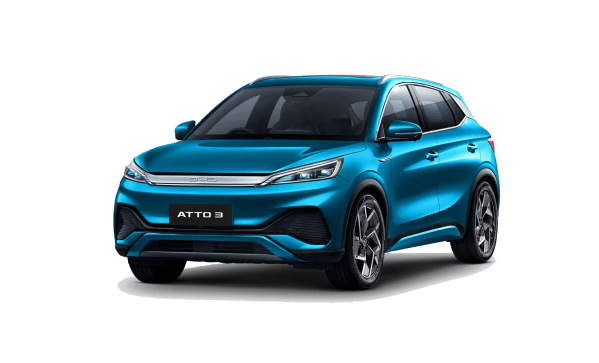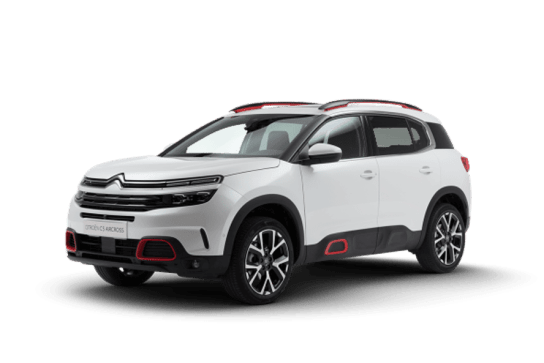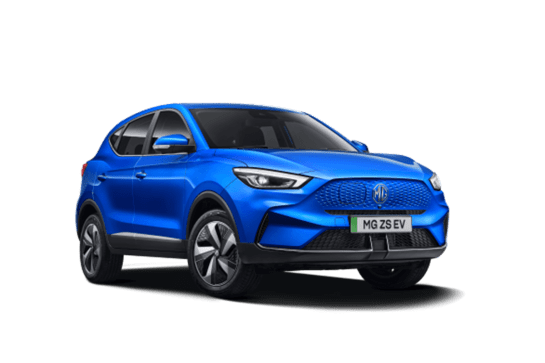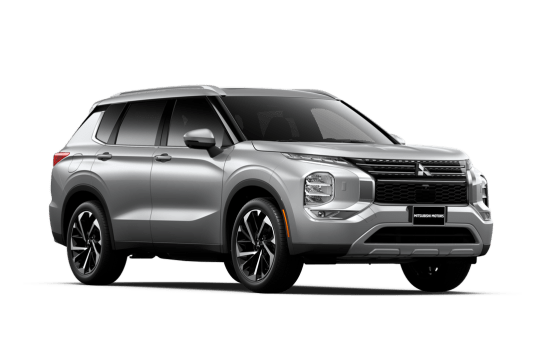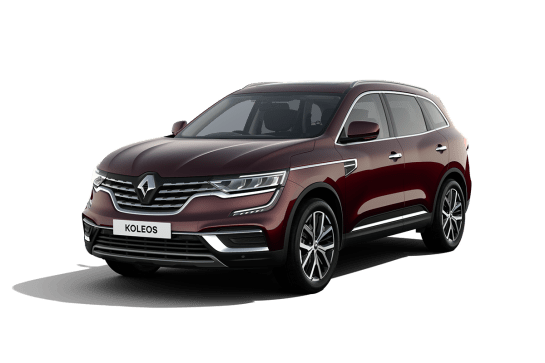
Renault Arkana VS Mitsubishi Pajero Sport
Renault Arkana
Likes
- Good looks
- Punchy engine
- Decent equipment list
Dislikes
- Glitchy transmission
- Firmish ride
- Not the cheapest
Mitsubishi Pajero Sport
Likes
- Very capable 4WD
- Versatile Super Select II 4WD system
- No-nonsense set-up
Dislikes
- Still feels old
- Firm ride
- Quite sluggish
Summary
Renault Arkana
Renault’s Arkana coupe-style compact SUV has been hit with its first makeover, which ushers in a range of styling changes, increased equipment and new model grade names.
There are few cars like it in the compact SUV segment, where vehicles usually favour the boxier, traditional SUV wagon shape over the stylish but often internal space compromised coupe SUVs.
Renault Australia is only expecting about one per cent share of the segment or around 1500 sales a year.
Read more about
- $10,000 truth about electric cars: Tesla Model Y rivalling Renault Megane E-Tech's $10,000 price cut to be permanent
- 2025 Renault Koleos finally revealed! But what are the chances of this 'Grand' hybrid SUV coming to Australia to battle the Toyota RAV4, Mazda CX-5 and Nissan X-Trail?
- 2025 Renault Captur revealed, confirmed for Australian launch within a year to take on Mazda CX-3, Kia Stonic and VW T-Cross
But if you want to stand out from the crowd of Mazda CX-30, Mitsubishi ASX and Toyota Corolla Cross small SUVs then the Arkana might be for you.
| Safety rating | |
|---|---|
| Engine Type | 1.3L turbo |
| Fuel Type | — |
| Fuel Efficiency | 5.9L/100km |
| Seating | 5 seats |
Mitsubishi Pajero Sport
The Mitsubishi Pajero Sport GSR is the top-spec wagon in an updated line-up.
The next-gen performance-enhanced Pajero Sport is expected here in 2025 but, in the meantime, Mitsubishi looks determined to squeeze the last bit of sales juice out of the current line-up as the entire range has now undergone a notable refresh including the introduction of 18-inch alloys, design tweaks to the front and rear, as well as new styling inside and new exterior paint choices.
Is this upgraded Pajero Sport a noteworthy rival for the likes of the Ford Everest and Isuzu MU-X and, more importantly, does it represent a solid buy?
Read more about
- Mitsubishi's updated family favourite spotted: 2025 Mitsubishi Outlander takes shapes as it prepares to battle the Toyota RAV4 Hybrid, Nissan X-Trail ePower and Kia Sportage
- Iconic badges to return? Mitsubishi Lancer and Montero nameplates trademarked in the US suggest Nissan Patrol twinned Pajero and Nissan Leaf relation are coming
- 'Uneconomic in its current form' to bring $30,000 electric car to Australia: Why we won't see the Mitsubishi eK X EV kei car here to undercut Chinese BYD Dolphin, GWM Ora and MG4
Read on.
| Safety rating | |
|---|---|
| Engine Type | 2.4L turbo |
| Fuel Type | Diesel |
| Fuel Efficiency | 8L/100km |
| Seating | 7 seats |
Verdict
Renault Arkana7.1/10
The Arkana is a stylish alternative in a sea of same-same compact SUVs. It's relatively well equipped and has some hidden gems in its ownership and running costs that elevate it above some of the competition.
It’s not a bad thing to steer, either, but the lurchy dual-clutch could be a deal breaker for some.
The sweet spot is the Techno, which misses out on the Esprit Alpine’s special touches but represents the most bang for your buck.
Note: CarsGuide attended this event as a guest of the manufacturer, with meals provided.
Mitsubishi Pajero Sport7.5/10
The Pajero Sport is reasonable on-road, more than satisfactory as a daily driver and it’s still a very effective 4WD.
This is a proven touring vehicle and while this update treatment doesn’t add a whole lot to the Pajero Sport package – and nothing in terms of power, torque or performance in general – it’s easily enough to tempt those who aren’t patient enough to wait for the next-generation version to arrive here.
Design
Renault Arkana
This update isn’t a massive overhaul of the Arkana, rather its “refreshing and enhancing” what was already there according to Renault Australia.
And this remains true with the car’s styling. Not much has changed on the outside except for a few minor garnishes and flourishes, especially on the Esprit Alpine variant.
The coupe styling isn’t for everyone. It’s more popular in Europe than Australia but if you want to stand out from the crowd it’s a good place to start.
The Arkana has curves in all the right places and its little grille made up of little Renault badge diamonds is a welcome addition in a world of wide mouth front ends. The C-shaped LED headlights and a large Renault badge add a bit of pop to its look.
The pinched rear end has LED lighting that runs from the tail-lights to the centre badge and Arkana is spelled out in big, bold letters.
The Esprit Alpine stands out with gunmetal highlights on the front bumper and the front and rear skid plates in the same colour. It also adds a Esprit Alpine badge below the side mirror and front door sill plates.
The Esprit Alpine has 'Tricolour' stitching in red, white and blue on the door trim and steering wheel, which is complemented by blue contrast stitching on the gear shifter, seats and centre console.
Cabin quality is variable. There are some nice feeling materials used on the dash and on the door trims but below eye level there are lots of hard wearing plastics. A big slab of faux wood running along the dashboard doesn’t feel as high-quality as you would like. The quality drops a bit in the back row, which is where carmakers often try to cut costs.
Solid white is the only no cost paint colour, but it is not available on the Esprit Alpine. Metallic white, blue, black, grey and red cost $750.
Buyers can also option a black roof for a two-tone look for $600.
Mitsubishi Pajero Sport
Most of the Pajero Sport’s latest round of upgrades is focused on styling refreshes, inside and out.
The upgraded interior in the GSR includes quilted two-tone burgundy and black synthetic leather upholstery.
This adds a welcome touch of understated class to an interior which is otherwise looking and feeling old.
The Pajero Sport now also has a three-spoke leather steering wheel and revised digital instrument display graphics, which may be difficult to discern for those unfamiliar with the previous renderings.
Outside, the GSR retains the distinctive Pajero Sport shape, albeit now with updated upper and lower grilles, front and rear bumper enhancements and black headlamp extensions (those are range-wide inclusions), as well as black door mirrors, door handles and tailgate handle.
Practicality
Renault Arkana
The Arkana isn’t a family SUV, but rather is pitched at younger couples and empty nesters.
Up front there is great forward vision with a higher seating position than hatchbacks and sedans. Electronically adjustable seats and a manually moveable steering wheel means there’s a good seating position for pretty much everyone.
The seats are comfy and the multimedia screen and climate controls are easy to reach. The centre console has a wireless device charger, two USB-A charging ports and a 12-volt socket to keep various devices juiced up.
Two cupholders take up most of the space with minimal storage space leftover. There are decent sized storage bins in the doors and a little net in the passenger seats footwell to stop small items rolling around.
Back seat passengers have their own air con vents and USB charging ports, which is a welcome addition.
In the rear pew is where the Arkana’s stylish coupe-like design dents its practicality. The sloping roof shrinks the windows and reduces headroom, which makes it feel a bit gloomy compared to more boxy-shaped SUVs that makes it no-no for smaller kids.
The boot is a decent size, but it’s longer and lower than other SUVs, which is the price you pay for looking good.
Mitsubishi Pajero Sport
The Pajero Sport cabin is practical, but now, as a result of the upgrade, it has more of a premium look and feel. Sure, it’s still on the wrong side of aged and it’s cramped, but at least it has a layer of gloss to it.
From front to back, it’s a well set-up space. The driver and front passenger seats (both power-adjustable) are very supportive, with a nice wrap-around feel to them. The other seats are also fine.
The reach- and height-adjustable steering wheel has paddle shifters for energetic shifting if you get the urge.
The dash and touchscreen media unit are nicely integrated, but that 8.0-inch screen is too small – and thankfully the likely introduction of a 9.0-inch screen in the 2025 Pajero Sport will sort out that issue.
The cabin’s familiar feel includes the fact that all buttons and dials are easy to locate and operate, even when you're bouncing around off-road.
The second row is comfortable and roomy enough, though the entire cabin tends towards the squeezy end of the spacious spectrum. Having said that, I slotted in behind my driving position and I had plenty of head, knee and foot room.
There are three top tether points, two ISOFIX anchors and a fold-down armrest with cupholders in the second row. There are USB charge points and a power socket in the back of the centre console bin.
Third-row seating is a bit of a straight-up-and-down affair with a flat seat base, but passengers back there – god bless ’em – have access to cupholders and air vents.
In terms of packability, the Pajero Sport’s cabin, as mentioned, is quite narrow compared to most of its rivals and there are plenty of other SUVs and 4WD wagons around that offer more room inside for people, gear and dogs.
With the third-row seats in use, boot space is listed as 131L. There are power sockets and tie-down points in that rear cargo area.
With the third row stowed away, there’s a claimed 502L of cargo space, which is pretty handy. With the second and third rows stowed, there’s a claimed 1488L.
Price and features
Renault Arkana
Initially Renault is launching with just two variants, the mid-tier Techno and top-spec Esprit Alpine, which replace the formerly named Intens and R.S. Line variants.
Despite the update, prices remain the same with the Techno starting at $41,000, before on-road costs, and the Esprit Alpine from $45,000.
An entry-level Evolution grade will arrive later to take the place of the old Zen variant. Expect it to be priced from $37,500.
The Arkana isn’t the cheapest compact SUV on sale with lower starting points for the Hyundai Kona, Kia Seltos and Mazda CX-30 ranges. It is cheaper than the hybrid-only Toyota C-HR and its French rival, the Peugeot 2008.
The two model grades are fairly well stacked with gear to justify the price, though.
Techno shoppers can expect 18-inch alloy wheels, which swell to 19-inche on the Esprit Alpine and all variants have LED head and tail-lights.
Step inside and the Techno grade has black leather and synthetic suede accented seats, which upgrade to more premium synthetic leather and suede upholstery with contrast blue stitching and Alpine badging in the top-spec grade.
The front seats are heated in both grades and the Esprit Alpine has a heated steering wheel, too.
On the tech front both variants have a 9.3-inch portrait-shaped multimedia display paired with a 10.25-inch digital driver display.
Apple CarPlay and Android Auto wireless smartphone mirroring is standard.
The Esprit Alpine version ditches the six-speaker stereo in the Techno for a booming eight-speaker Bose system and it adds a sunroof.
Mitsubishi Pajero Sport
As mentioned, the test vehicle is a GSR spec Pajero Sport, a seven-seat 4WD wagon with a price-tag of $64,840, before on-road costs.
But this test example has a bunch of accessories onboard – including a towbar kit ($1546), snorkel ($1103), electric brake controller ($710), roof rack/cross bars ($604), carpet mats ($249) and a towball ($42), pushing its price-tag up to the $69,094 mark, excluding on-road costs.
Standard features include an 8.0-inch touchscreen multimedia system (with Apple CarPlay and Android Auto), digital radio, as well as three-zone climate-control, front and rear parking sensors and a power-operated tailgate.
The Pajero Sport packs a whole lot more, of course, and it compares evenly with most other similarly priced seven-seat 4WDs on the market.
Exterior paint choices include 'White Diamond', 'Terra Rossa', 'Graphite Grey' and 'Black Mica', but you can also choose from White Diamond with black roof, Terra Rossa with black roof, and the new Graphite Grey with black roof.
Under the bonnet
Renault Arkana
The Arkana keeps the 1.3-litre four-cylinder turbocharged petrol engine from before. It makes 115kW and 262Nm and is paired with a seven-speed dual-clutch auto that drives the front wheels.
That’s plenty of grunt for a car this size, but it’s let down by a glitchy transmission that hesitates a lot at lower speeds and doesn’t do its best work when asked to hustle, either.
Mitsubishi Pajero Sport
The Pajero Sport has a 2.4-litre, four-cylinder, turbo-diesel engine producing 133kW at 3500rpm and 430Nm at 2500rpm – and that’s matched to a eight-speed automatic transmission.
This is a solid but lacklustre combination – it’s agricultural, truck-like and it takes a heavy right foot to punch it off the mark. But overall, I don’t mind the driving experience.
This is a respectable and well-proven combination, more than a bit sluggish and far from dynamic, but it does the job.
The GSR has Mitsubishi’s 'Super Select II' 4WD (a full-time 4WD system), selectable off-road modes and a rear diff lock.
The Super Select dial is positioned at the rear of the shifter and enables the driver to switch from '2H' (two-wheel drive), '4H' (4WD high-range), '4HLc' (4WD High Range with locked centre diff) and '4LLc' (4WD Low Range with locked centre diff).
The driver is able to safely switch between 2WD (2H) and 4WD (4H, 4HLc) at speeds of up to 100km/h.
The GSR has a button-operated off-road mode system – with 'Gravel', 'Mud/Snow', 'Sand' or 'Rock' settings, each of which tweaks engine output, transmission settings and traction control to best suit the terrain. It also features hill descent control.
The 2025 Pajero Sport will have the new Triton’s twin-turbo four-cylinder diesel engine (producing 150kW and 470Nm) and it’ll be paired with an eight-speed auto.
Efficiency
Renault Arkana
Efficiency is the name of the game with the Arkana’s little turbo engine. The French brand claims it drinks 5.9L/100km on the combined (urban/extra-urban) cycle but we averaged 7.5L/100km on our circa two-hour country road drive according to the trip computer.
The higher speed twisting and turning country roads we drove on aren’t conducive to low fuel use, though.
It has a 50-litre fuel tank and only requires cheaper 91 RON petrol, which is rare for little turbo engines that usually have premium tastes.
Mitsubishi Pajero Sport
The Pajero Sport has an official fuel consumption figure of 8.0L/100km on a combined (urban/extra-urban) cycle.
I recorded 9.8L/100km on this test. I did a lot of high- and low-range 4WDing and the Pajero Sport was never working hard.
The Pajero Sport has a 68L fuel tank, so, going by my on-test fuel-consumption figure, you could reasonably expect a driving range of about 694km from a full tank.
Driving
Renault Arkana
The Arkana is a bit of a mixed bag on the road. Its engine is a nice little unit but the dual-clutch auto deflates the drive experience.
At lower speeds it hesitates and then gives too much oomph all at once, which can result in some wheel spin. It means you need to be mindful at T-intersections and when turning across traffic and feather the pedals.
This is a symptom of most dual-clutch autos but the Arkana’s is less sophisticated than say ones fitted to Volkswagens, and the Arkana doesn’t have the meaty power and torque bands of performance cars. A conventional torque converter auto would suit it better.
The Arkana does some of its best work at higher speeds, where the dual-clutch is more decisive and it's an admirable highway cruiser.
It isn’t a bad operator through the bends where it exerts excellent body control to minimise rolling. This is complemented by nice steering that is well weighted and accurate. Pedal feel is excellent with no woody or doughy feel to them.
The suspension is on the firmer side and you’ll feel some harsh bumps, especially over consistent smaller ones that it will crash over.
Its rear torsion beam suspension set-up is less sophisticated than the multilink arrangements found in an increasing number of competitors in the segment.
Road noise is noticeable at higher speeds. There's a fair bit of wind noise, too, but it was an especially windy day on our test drive.
The Arkana isn’t a sports car but is a stylish SUV for punting around town and facilitating weekend getaways, but there are other compact players that answer this brief better.
Mitsubishi Pajero Sport
There have been no power, torque or driver-assist tech changes to this upgraded Pajero Sport – you’ll have to wait for the next-gen version for those – so no surprises lay in wait when driving.
But that’s okay, because the Pajero Sport in its current guise is a solid daily driver – not spectacular, but far from atrocious.
The Pajero Sport is 4840mm long (with a 2800mm wheelbase), 1815mm wide, 1835mm high and has a kerb weight of 2130kg.
Compared to other similarly-sized 4WD wagons, the Pajero Sport is narrower and has a higher centre of gravity, so it’s nimble – the turning circle is a respectable 11.2m – but it also feels a bit floaty on roads and tracks, but not despicably so.
The Pajero Sport is reasonable on sealed surfaces, although it is sluggish, noisy and there’s quite a lot of body-roll through sharp turns, especially compared to some of its more refined rivals, such as the Ford Everest.
But it is a very capable off-roader, mostly because the driver has access to a raft of technical advantages engineered into the Pajero Sport aimed at making 4WDing a safer challenge.
One of the major points of difference it has with its rivals is Super Select II 4WD. You can switch, via a dial to the rear of the auto shifter, from 2H into 4H (four-wheel drive, high-range), if you're not already driving with 4H engaged, and that gives you the best traction possible in low-grip conditions, which you may face on rough back-roads and dirt tracks peppered with loose rocks and potholes.
There's no risk of transmission wind-up because the centre diff is open when 4H is engaged in the Pajero Sport, so Super Select II 4WD adds an extra element of safety and sure-footedness to your driving experience.
Then turn the dial to 4HLc (four-wheel drive, high-range, locked centre diff) and you're ready to take on more difficult terrain but at lower speeds, because the centre diff is no longer open.
If you want to tackle even harder stuff than high-range territory, turn the dial to 4LLc (four-wheel drive, low-range, locked centre diff) and the Pajero Sport has an opportunity to excel in low-speed, low-range four-wheel driving.
Turn the dial to 4HLc and you're ready to take on more difficult terrain but at lower speeds.
So, along with decent high- and low-range gearing and a centre diff-lock – activated when 4HLc (4WD high-range, locked centre diff) or 4LLc (4WD low-range, locked centre diff) is selected – the Pajero Sport has a rear diff lock, which is engaged/disengaged via a button in front of the shifter and this further help you to easily maintain safe forward momentum.
Hill descent control sustains a controlled low speed of 3.0-4.0km/h all the way down steeper, longer hills.
The GSR also has selectable off-road modes, including Gravel, Sand, Mud/Snow (when in high-range 4WD) and Rock (when in low-range 4WD).
Each of these modes adjusts engine output, transmission settings and braking, the aim being the acquisition of superior traction to suit specific conditions and terrains.
The Pajero Sport is riding on Toyo Open Country A32 all-terrains (265/60R18 110H), which are decent tyres, but it would perform even better with more aggressive rubber.
Wheel travel is adequate, ground clearance (218mm) is reasonable, although you still have to mind your driving line through rough terrain and be mindful of this 4WD’s approach (30 degrees), departure (24.2) and ramp-over (23.1) angles. Wading depth is listed as 700mm.
While it’s never been regarded as a tow rig in the same vein as something like the Toyota LandCruiser or the Nissan Patrol, the Pajero Sport offers sensible claimed towing capacities of 750kg (unbraked) and 3100kg (braked).
Payload is listed as 645kg (so about standard for this size 4WD wagon), gross vehicle mass (GVM) is 2775kg and gross combined mass (GCM) is 5565kg.
Safety
Renault Arkana
The Arkana holds a maximum five-star ANCAP rating, but it is based on the 2019 crash test of the Renault Captur, with which it shares much of its underpinnings. This rating is due to expire in late 2025.
There are six airbags and a range of active driver aids included as standard and the update adds a 360-degree camera view to all grades.
This joins auto emergency braking with pedestrian and cyclist detection, lane keep assist, blind-spot monitoring, rear cross-traffic alert, radar cruise control and speed sign recognition.
A lot of carmakers just tick the box for active driver aids but don’t think of the calibration. Not Renault. The driver aids barely interjected during the launch drive and only chirped up when needed, which is a welcome reprieve from the overly touchy and nannying sensors found in other cars.
Mitsubishi Pajero Sport
The Pajero Sport range did have the maximum five-star ANCAP safety rating, but that expired in January 2023.
As standard it has dual front airbags, driver knee, front-side and curtain airbags, as well as two ISOFIX points and three top tether points for child seats/baby capsules in the second row.
Driver-assist tech includes AEB, blind spot warning, rear cross-traffic alert, lane-departure warning/intervention, hill descent control, trailer stability assist and more.
Ownership
Renault Arkana
There is one part of Renault’s ownership credentials that others can’t match.
Its service intervals are every 12 months and a whopping 30,000km, which is double the industry norm of 15,000km.
If you need to do big kays such as a sales rep or rideshare driver might this will be extremely important.
Five years or 150,000km of capped price servicing visits costs $2385, which is one the expensive side compared to Honda, Hyundai and Toyota but is in the ballpark of similar-sized Kias and Volkswagens.
Renault covers the Arkana with a five year/unlimited km warranty - par for the course in the mainstream market - and five years of roadside assistance.
Mitsubishi Pajero Sport
The Pajero Sport has a 10-year/200,000km manufacturer’s warranty as long as you get it serviced as per the schedule at an authorised Mitsubishi dealer.
Mitsubishi’s 10-year capped price servicing applies – with prices ranging from $399 to $999 – and servicing is scheduled for every 12 months or 15,000km whichever occurs first. Check with your dealership for up-to-date servicing costs.
All Pajero Sports come with 12-months roadside assistance, but that can be extended to four years if the vehicle is serviced at an authorised Mitsubishi dealer in line with the official service schedule.




